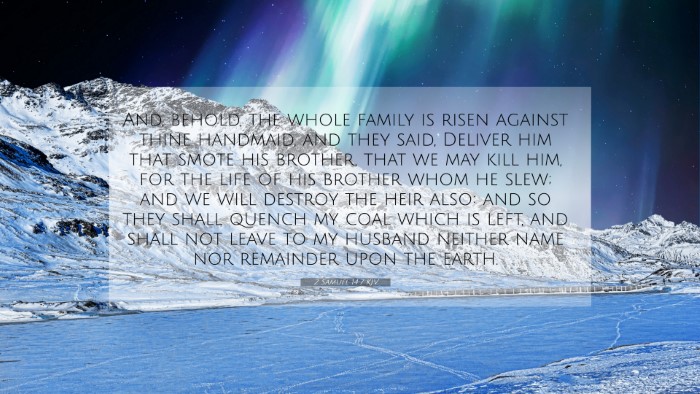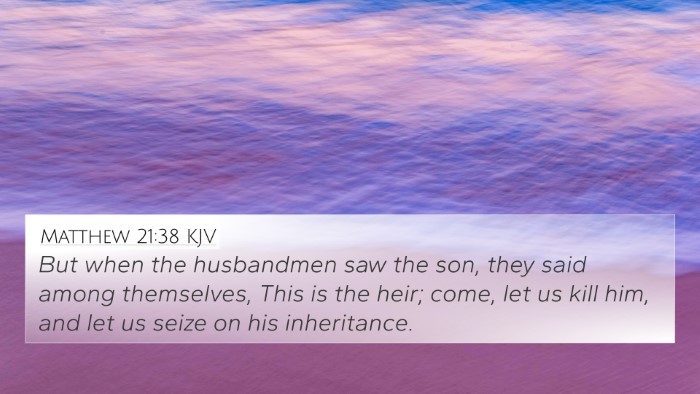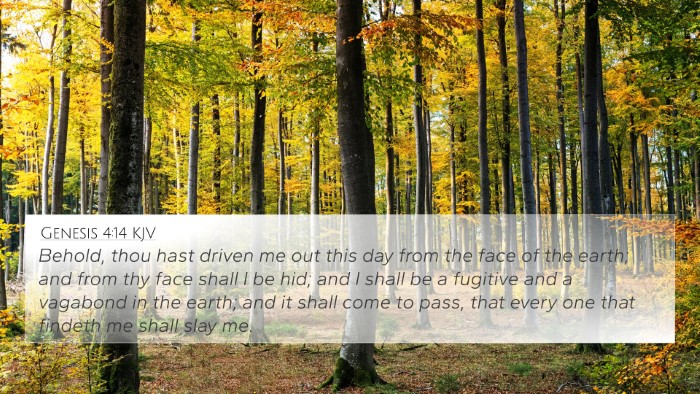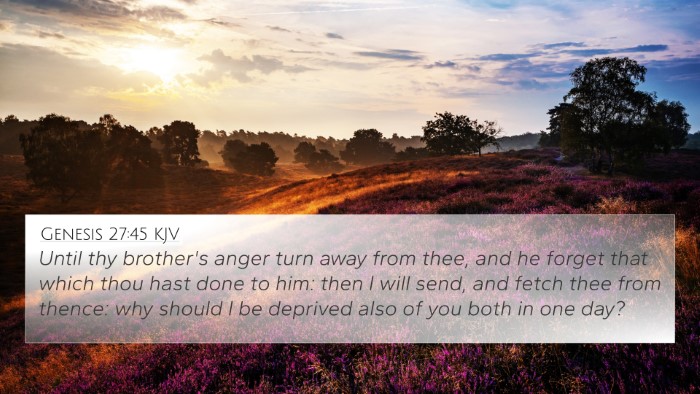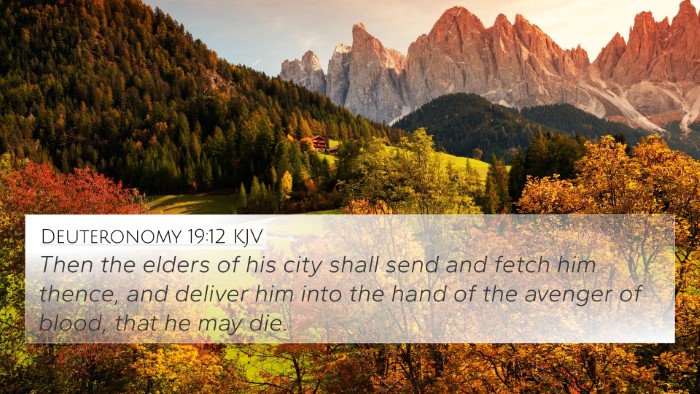Understanding 2 Samuel 14:7
2 Samuel 14:7 presents a profound narrative and thematic situation within the Biblical text. Within this verse, we find a plea for justice and protection, highlighting the nuances of familial relationships and the complexities of human emotions. In order to provide a comprehensive interpretation of this scripture, this analysis draws insights from several eminent public domain commentaries including the works of Matthew Henry, Albert Barnes, and Adam Clarke.
Verse Context
In 2 Samuel 14:7, we find a situation where a woman from Tekoa approaches King David to advocate for her son, who is in jeopardy because he has killed his brother. She employs a wise and strategic argument to evoke kingly grace and mercy. The context of this narrative is essential as it sets the stage for understanding the overarching themes of grace, justice, and reconciliation.
Key Themes
- Justice and Mercy: The woman’s plea to the king portrays the necessity of balancing justice with mercy—a theme reiterated throughout the scripture.
- Familial Relationships: The conflict between family members showcases the intricate dynamics that often lead to strife and division within households.
- Intercession: The woman acts as an intercessor for her son, illustrating the role of advocates in our lives and the power of heartfelt appeal.
Bible Verse Cross-References
Understanding 2 Samuel 14:7 can be deepened through the lens of cross-referenced scriptures. The following references are relevant:
- Genesis 4:8: The first murder between Cain and Abel resonates with themes of fratricide.
- 2 Samuel 13:28-29: The context of Absalom avenging his sister provides background to familial violence.
- 1 Kings 2:32: The application of justice and retribution aligns with the king's obligations.
- Matthew 5:7: The beatitude regarding mercy underscores the importance of compassion beyond judgment.
- Luke 15:20: The parable of the Prodigal Son illustrates familial reconciliation.
- Romans 12:19: The call for vengeance to be left to God parallels the protective stance of the mother.
- Proverbs 21:15: This proverb speaks to the joy of the just and the ruin of evildoers, reflecting the duality of justice and mercy.
Commentary Insights
Matthew Henry's Commentary: Matthew Henry emphasizes the moral lesson of advocating for mercy and the importance of appealing for one's own flesh and blood. He underscores the emotional depth of the mother's plea, suggesting that her approach embodies wisdom and humility.
Albert Barnes' Notes: Barnes offers insights into the character of the king during this time, noting David's tendency towards compassion and the need for leaders to exercise both wisdom and heart in their rulings. He discusses the implications of the king’s role in the administration of justice.
Adam Clarke's Commentary: Clarke provides a detailed analysis of the text, exploring cultural contexts and the gravity of the situation for both the mother and the king. He draws attention to the significant role of women in the narratives of the Old Testament.
Connections Between Bible Verses
Through the study of 2 Samuel 14:7, we can identify several connections and similarities between scriptures. The verse serves as a nexus that links notions of intercession and justice, prominent in both the Old and New Testaments.
- Comparative Bible Verse Analysis: This verse aligns with the New Testament emphasis on mercy and compassion, creating a dialogue between the two testaments.
- Inter-Biblical Dialogue: The themes in this verse encourage readers to seek connections across different scripture instances, enhancing understanding.
- Bible Verse Parallels: Recognizing the parallels in human relationships and the need for forgiveness and mercy can be seen in the narratives of both the Old and New Testaments.
Guidance for Bible Study
For readers interested in exploring these ideas further, several tools and methods can aid in cross-referencing and deeper understanding:
- Bible Concordance: Utilizing a concordance can assist in locating similar themes and words across scripture to uncover deeper meanings.
- Bible Cross-Reference Guide: A guide can streamline your study by providing a systematic way of finding related verses.
- Cross-Referencing Bible Study Methods: Engaging in thematic studies helps to see connections between books and different authors in the Bible.
Conclusion
By reflecting on 2 Samuel 14:7 through the lens of various commentaries and cross-referenced scripture, we gain a multi-faceted understanding of this poignant plea for mercy. The themes of justice, mercy, and familial bonds invite us to explore how scriptural teachings apply to our lives today and encourage us to engage with the Bible thoughtfully.


